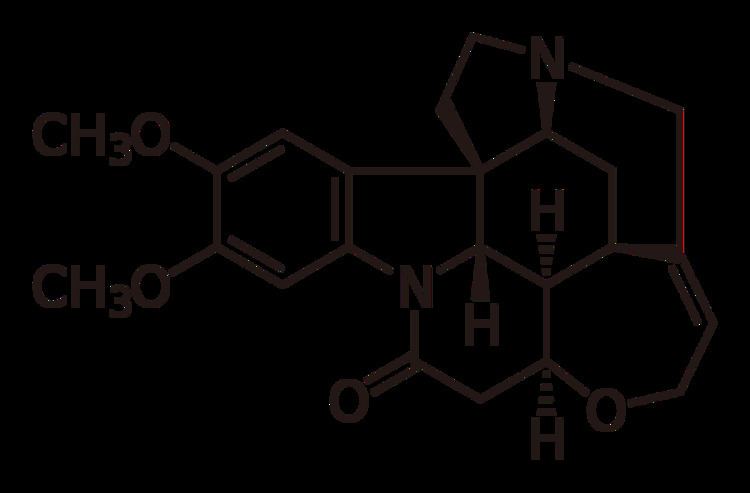 | ||
Brucine, an alkaloid closely related to strychnine, is most commonly found in the Strychnos nux-vomica tree. Brucine poisoning is rare, since it is usually ingested with strychnine, and strychnine is more toxic than brucine. In synthetic chemistry, it can be used as a tool for stereospecific chemical syntheses.
Contents
- History
- Toxicity
- Mechanism of action
- Identification and treatment
- Chemical applications
- Medical applications
- Alcohol Denaturant
- References

History

Brucine was first discovered in 1819 by Pelletier and Caventou in the bark of the Strychnos nux-vomica tree. While its structure was not deduced until much later, it was determined that it was closely related to strychnine in 1884, when the chemist Hanssen converted both strychnine and brucine into the same molecule.
Toxicity
The probable fatal dose of brucine in adults is 1 g. In other animals, the LD50 varies considerably.
Mechanism of action

Brucine’s mechanism of action closely resembles that of strychnine. It acts as an antagonist at glycine receptors and paralyzes inhibitory neurons.

Glycine binds to receptors on inhibitory neurons to terminate action potentials. Its binding terminates an action potential by causing an influx of chloride ions into the neuron, repolarizing the neuron to its resting potential. Brucine also binds to these receptors, but its binding does not trigger an influx of chloride ions. Brucine's toxicity arises because glycine is blocked from binding to its receptors, making inhibition of an action potential more difficult.
Identification and treatment
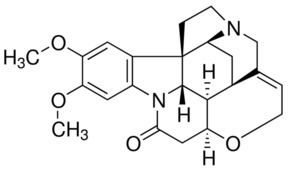
Historically, brucine was distinguished from strychnine by the addition of chromic acid in H2SO4, since it does not give off the series of colors that is characteristic of strychnine.
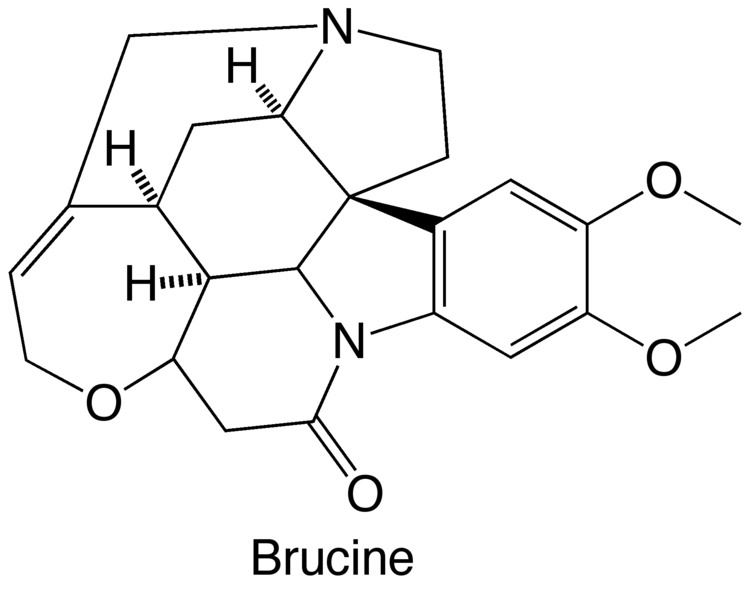
Today, pure brucine intoxication occurs very rarely, since it is usually ingested with strychnine. Symptoms of brucine intoxication include muscle spasms, convulsions, rhabdomyolysis, and acute renal failure. Brucine can be detected and quantified using liquid chromatography-mass spectrometry.
Chemical applications
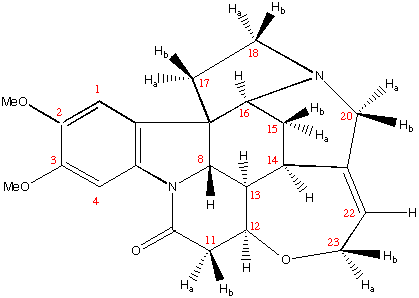
Since brucine is a large chiral molecule, it has been used as an enantioselective recognition agent using in chiral resolution. Fisher first reported its use as a resolving agent in 1899, and it was the first natural product used as an organocatalyst in a reaction resulting in a successful enantiomeric enrichment by Marckwald, in 1904. Its bromide salt has been used as the stationary phase in HPLC in order to selectively bind one of two anionic enantiomers. Brucine has also been used in fractional distillation in acetone in order to resolve dihydroxy fatty acids, as well as diarylcarbinols.
Medical applications
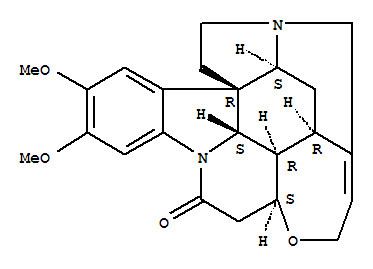
While brucine has been shown to have good anti-tumor effects, on both hepatocellular carcinoma and breast cancer, its narrow therapeutic window has limited its use as a treatment for cancer.
Brucine is also used in traditional Chinese medicine as an anti-inflammatory and analgesic agent, as well as in some Ayurveda and homeopathy drugs.
Alcohol Denaturant
Brucine is one of the many chemicals used as a denaturant to make alcohol unfit for human consumption.
